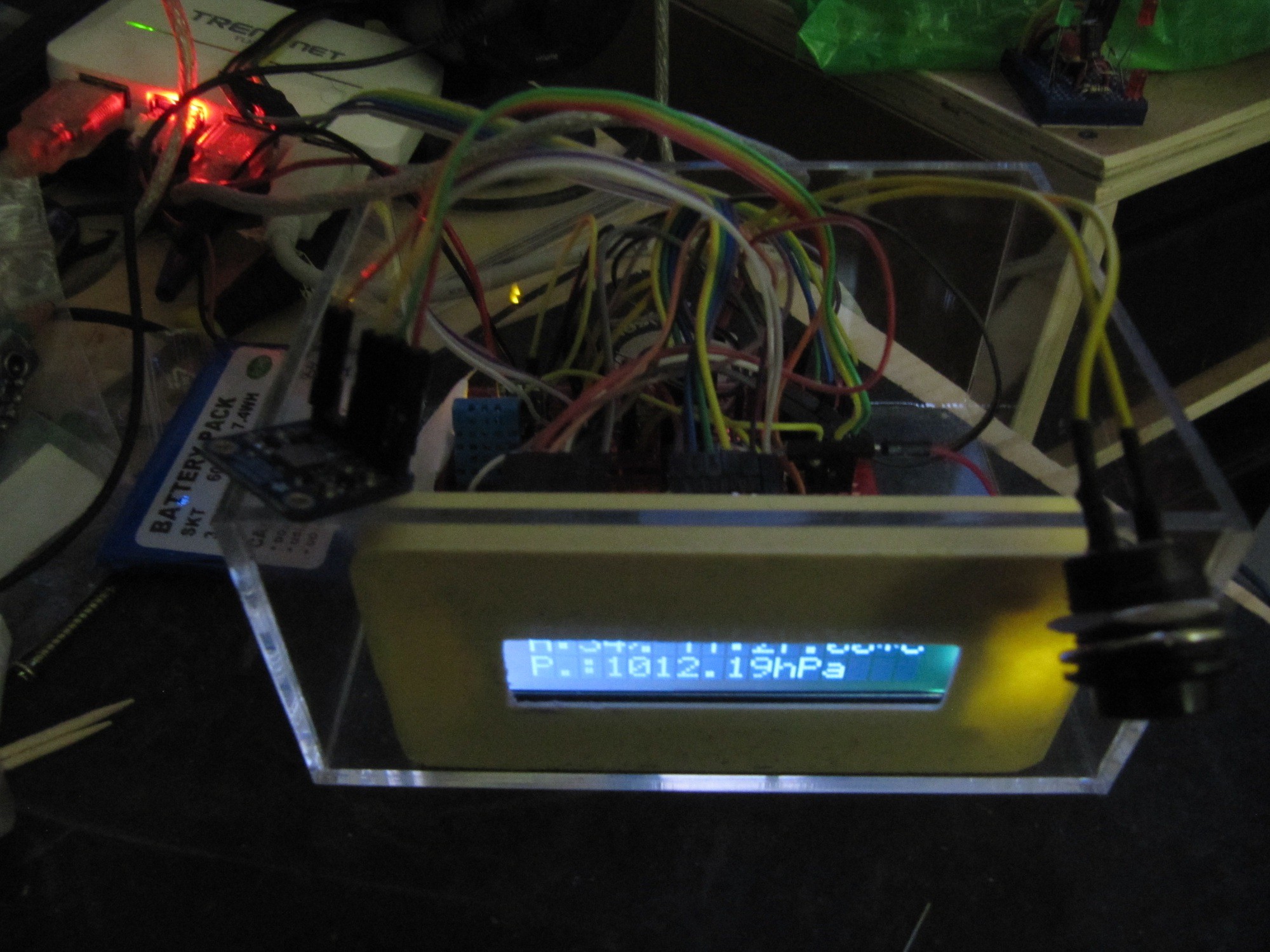This first module is not intended to be the "main" module. I will thus probably modify it later on to put it in remote locations. However, as of now, i want to be able to take it wherever i need it, in order to obtain measurements in various places. Hence the need for a battery. I added a 2000mAh LiPo battery (1S, 3.7V), and a "S7V7F5", a 5V pololu switching regulator (step-up and step-down : http://www.pololu.com/product/2119). I like it because it is able to boost the voltage as well as lower it, and has around 80-90% efficiency. It is also straightforward to use, as it can be used in the same fashion of a LM7805.
With the LCD on, and a fully charged battery, i achieved between one an two days of autonomy. I will later measure the current accurately to perform precise estimations of what to expect.
In order to charge it, i'm using a simple circuit from adafruit : https://www.adafruit.com/products/1304 , an "Adafruit Micro Lipo - USB LiIon/LiPoly charger".
I splitted the wires from the battery leads, and thus i can have it plugged while charging. According to adafruit's tech support, it can be done : https://forums.adafruit.com/viewtopic.php?f=22&t=58376
I tested it, and it works.
I thus have a USB or battery powered device.

I will have to conduct further experiments on battery life, without the LCD backlight, and probably with a 3.3V VCC rather than 5V. Indeed, this drastically reduces the current needed by the atmega.
I may use a solar panel later on to keep the battery charged.
 Audrey Robinel
Audrey Robinel
Discussions
Become a Hackaday.io Member
Create an account to leave a comment. Already have an account? Log In.